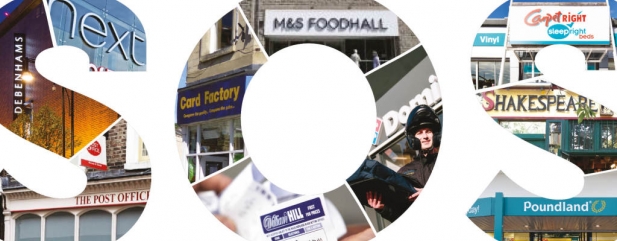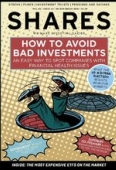Archived article
Please note that tax, investment, pension and ISA rules can change and the information and any views contained in this article may now be inaccurate.
Can the Government really save the high street?

In the Budget last week Chancellor Philip Hammond announced three measures to try to revive beleaguered UK high streets.
The first is the creation of a £675m Future High Streets Fund to support and finance local areas’ plans to re-invigorate their high streets and town centres making them ‘fit for the future’.
The second is a one-third cut in business rates for companies with a rateable value of less than £51,000 for the next two years.
The third is a digital sales tax intended to turn the tables on global platform businesses which create value in the UK but don’t pay their ‘fair share’ of taxes in the Chancellor’s opinion.
Together these measures are a welcome shot in the arm for high-street businesses but it’s debatable how big their impact will be and whether or not they can actually get people back to town centres.
The cut in business rates will supposedly help 90% of small shops, cafes and bars, but the 10% of businesses which are too large to qualify actually pay 70% of the total raised through business rates.
Similarly the unilateral digital sales tax is unlikely to dissuade shoppers to stop using Amazon and the like even if some of the tax is passed on to them.
‘SOMETHING MUST BE DONE’
Due to the explosion in online shopping and changing consumer habits footfall on the high street is in freefall.
According to Barclaycard’s monthly consumer spending report, in-store sales have barely grown this year despite the ‘barbecue’ summer and the brief lift from the World Cup.
Figures from retail consultant Springboard show footfall on high streets and in shopping centres is in inexorable decline while out-of-town retail parks have seen footfall rise slowly but steadily.
The big question is, if we’re going to get people back to the high street, what do we want it to look like?
This is exactly what polling company YouGov (YOU:AIM) asked shoppers in a survey carried out in May. The results are as surprising as they are confusing.
THE IDEAL HIGH STREET DEPENDS ON WHO YOU ASK
The top five shops on the ‘dream’ high street are a bank (92% of respondents), a post office (also 92%), a pharmacy (91%), a restaurant or café (90%) and a clothes shop (87%).
This seems somewhat ironic as banks and post offices are among the shops disappearing most rapidly with over 700 high street bank branches and nearly 600 post offices shutting up shop last year alone.
Also with in-store clothing sales contracting dramatically as shoppers take their habit online – as illustrated by the likes of Next (NXT) – the hankering for more clothing shops is something of a mystery.
The least popular shops are bookies (with 73% of respondents specifically voting against rather than for) followed by estate agents, dry cleaners, off-licences and beauty salons.
Broken down by demographics, the results are even more startling. While the 65s and over voted for travel agents, newsagents, homeware and book stores, the 18 to 24-year olds voted for fast food shops, video game stores, cinemas and mobile phone shops.
By gender, more women than men voted for coffee shops, charity shops, book stores and beauty salons while in stereotypical fashion more men voted for off-licences and bookmakers.
Sadly department stores failed to fire up the young or the old, as borne out by the ongoing demise of Debenhams (DEB) and the ignominious exit of House of Fraser.
HIGH STREETS AFFECTING OUR HEALTH
Another study, published last week by the Royal Society for Public Health, shows a sharp divide between high streets in northern England and those in the south and paints a worrying picture of our town centres.
As well as identifying the healthiest and unhealthiest high streets out of 70 towns and cities in the UK, the study makes some hard-hitting recommendations.
First, it says there are too many fast food and betting shops so the Government should allow local authorities to restrict more shops opening where there are already clusters. It also suggests there should be no hot food takeaway shops to open within 400m of a school.
Second, it recommends all businesses selling food on the high street need to reduce the calories in their products while health-promoting businesses should be offered discounted advertising including on social media sites.
Third, it suggests rents and rates should be set according to health-promotional efforts of each business, with those that try to improve public health favoured the most.
If the Treasury is able to build a coherent regeneration strategy using surveys such as these along with its promise to bring planning ‘expertise’ and a ‘hands-on approach’ then maybe there is hope for the high street.
All these issues are relevant to various London-listed stocks with high street exposure including Marks & Spencer (MKS), Card Factory (CARD), Domino’s Pizza (DOM) and William Hill (WMH).
One way to encourage shoppers back to the high street would be to encourage free parking. However with councils making record amounts in parking fines (£819m in the financial year 2016-17 according to figures from the Department for Communities and Local Government) there are probably too many vested interests to allow such a simple fix to work. (IC)
Important information:
These articles are provided by Shares magazine which is published by AJ Bell Media, a part of AJ Bell. Shares is not written by AJ Bell.
Shares is provided for your general information and use and is not a personal recommendation to invest. It is not intended to be relied upon by you in making or not making any investment decisions. The investments referred to in these articles will not be suitable for all investors. If in doubt please seek appropriate independent financial advice.
Investors acting on the information in these articles do so at their own risk and AJ Bell Media and its staff do not accept liability for losses suffered by investors as a result of their investment decisions.
Issue contents
Big News
- What the US midterm election results mean for markets
- Aberdeen plans global private-market sustainability trust
- UK metal bashers are facing uncertainty as Brexit looms
- Trustpilot IPO could provide big bucks exit for seed backer Draper Esprit
- Living wage increase: which stocks are most impacted?
- Investors see value in emerging markets
- Why isn’t the oil price surging on Iran sanctions?

 magazine
magazine











